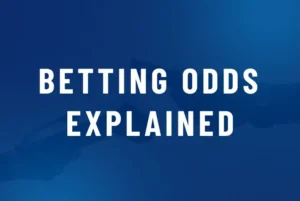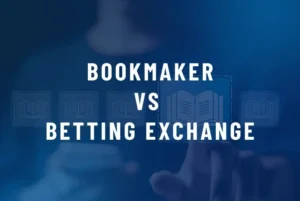How Betting Odds Work? Our Step-by-Step Guide for UK Betting Beginners
Ever looked at a betting slip and felt lost by the numbers? This guide breaks down betting odds, fractional, decimal, and moneyline so you can read them with confidence and bet smarter.

Ever stared at a betting slip or sportsbook screen and thought, “What on earth do those numbers mean?”? You’re not alone. Whether it’s 3/1, 2.50, or +150, betting odds can look confusing if you’ve never encountered them before.
Understanding how betting odds work is crucial if you want to bet sensibly. Odds aren’t just numbers – they tell you:
- How much you stand to win
- The implied probability of an event happening
- The relative risk vs reward in your bet
This guide breaks it all down in simple, practical terms. By the end, you’ll read betting odds as easily as reading a price tag at the supermarket.
What Are Betting Odds?
Let’s start from the beginning.
Betting odds are numbers set by bookmakers to show:
- How much you’ll win if your bet is successful
- The bookmaker’s estimation of the likelihood of a particular outcome
Example:
- A horse priced at 5/1 isn’t just a random number. It reflects how the bookie sees its chances of winning compared to other horses.
Put simply:
- Higher odds = Less likely to happen (but bigger potential win)
- Lower odds = More likely to happen (but smaller potential win)
The Three Main Odds Formats
In the UK, you’ll see Fractional odds most often, but online betting means you’ll also encounter:
- Fractional Odds (UK Odds)
- Decimal Odds (European Odds)
- Moneyline Odds (American Odds)
Let’s tackle each.
Fractional Odds Explained
What Are Fractional Odds?
Fractional odds look like this:
- 5/1
- 10/3
- 7/2
How they work:
- The first number (numerator) = Profit you’ll win
- The second number (denominator) = Your stake amount
So:
- 5/1 → For every £1 staked, you win £5 profit
- 10/3 → For every £3 staked, you win £10 profit
Your total return includes both your profit and your original stake.
Example:
- You bet £10 on a horse at 7/2
- Potential profit = £10 × (7 ÷ 2) = £35
- Total return = £35 profit + £10 stake = £45
Why Fractional Odds Matter
Fractional odds are deeply rooted in UK betting culture – from racecards at Ascot to slips in the local betting shop. You’ll see them on:
- Horse racing
- Football
- Cricket
- Greyhound racing
- Any traditional UK sports market
Decimal Odds Explained
What Are Decimal Odds?
Decimal odds look like this:
- 1.50
- 2.25
- 6.00
They’re increasingly popular in online betting because they’re easier to calculate. Decimal odds include your stake in the number shown.
How they work:
Total Return = Stake × Decimal Odds
Example:
- You bet £10 on odds of 3.50
- Total return = £10 × 3.50 = £35
- Profit = £35 – £10 stake = £25
Converting Fractional to Decimal
Quick formula:
Decimal Odds = (Fractional Odds) + 1
So:
- 5/1 = 5 + 1 = 6.00
- 10/3 = (10 ÷ 3) + 1 ≈ 4.33
Why Decimal Odds Matter
Decimal odds simplify betting maths:
- No fractions to worry about
- Quick to compare odds between bookies
- Common in betting exchanges like Betfair
They’re especially popular in:
- European markets
- Online sportsbooks
- In-play betting
Moneyline (American) Odds Explained
What Are Moneyline Odds?
Mostly used in the USA, Moneyline odds show how much you’ll win on a $100 stake (positive odds) or how much you need to stake to win $100 (negative odds).
Examples:
- +200 → Bet £100, win £200 profit
- -150 → Stake £150 to win £100 profit
Converting Moneyline Odds
To Decimal:
- Positive odds: (Moneyline/100) + 1
- Negative odds: (100/abs(Moneyline)) + 1
Example:
- +200 → (200/100) + 1 = 3.00
- -150 → (100/150) + 1 ≈ 1.67
How Odds Reflect Probability
Bookmakers don’t just pluck odds from thin air. They reflect implied probability – the bookmaker’s estimate of how likely something is to happen.
Formula:
Implied Probability (%) = 1 ÷ Decimal Odds × 100
Example:
- Decimal odds of 2.00 → 1 ÷ 2 × 100 = 50% chance
Let’s try fractional odds:
- 5/1 → Convert to decimal = 6.00
- Implied probability = 1 ÷ 6 × 100 ≈ 16.67%
Bookmakers’ Margin – The Overround
A bookmaker builds a profit margin into the odds. This is called the overround.
- Bookie sets odds so total probabilities exceed 100%
- The extra percentage = bookie’s potential profit
Example:
- Three horses in a race:
- Horse A: 2.00 (50%)
- Horse B: 3.00 (33.33%)
- Horse C: 4.00 (25%)
- Total probability = 50 + 33.33 + 25 = 108.33%
That 8.33% is the overround – the bookmaker’s cushion.
Examples of How Betting Odds Work
Example 1 – Horse Racing
- Horse X priced at 8/1
- You bet £20
- Profit = £20 × 8 = £160
- Total return = £160 + £20 stake = £180
Implied probability:
- Decimal odds = 8 + 1 = 9.00
- Probability = 1 ÷ 9 × 100 ≈ 11.11%
Example 2 – Premier League Football
Arsenal vs Spurs:
- Arsenal: 2.25
- Draw: 3.50
- Spurs: 3.2
If you bet £10 on Arsenal:
- Return = £10 × 2.25 = £22.50
- Profit = £12.50
Implied probability:
- 1 ÷ 2.25 × 100 ≈ 44.44%
So, the bookmaker thinks Arsenal have about a 44% chance of winning.
Why Odds Matter to Your Betting Strategy
Understanding odds helps you:
- Compare prices between bookies
- Find value bets (when odds are higher than true probability)
- Manage your bankroll sensibly
- Avoid poor returns on risky bets
Example:
If you think a team has a 50% chance of winning but bookies offer odds of 3.00 (implied probability 33.33%), that’s potentially a value bet. Learn more about it in “Value Betting Explained – How to Find Profitable Odds“.
Practical Tips for Reading Betting Odds
- Always check odds format: Some sites default to decimals, others to fractions.
- Compare bookies: Odds can vary significantly across sites.
- Look for overround: A high overround means less value for you.
- Be cautious of long shots: Big odds can be tempting, but they’re often low probability for a reason.
- Understand implied probability: Helps you spot poor-value odds.
Common Mistakes to Avoid
- Confusing decimal odds with fractional
- Ignoring the bookmaker’s margin
- Thinking odds mean certainty rather than probability
- Chasing long shots purely for big returns
What Is Best Odds Guaranteed?
Best Odds Guaranteed is a promotion many UK bookmakers offer, mainly on horse racing and greyhound markets. It protects you if the starting price (SP) ends up higher than the odds you took when placing your bet.
How it works:
- You place your bet earlier in the day, locking in a fixed price (the “early price”).
- If the official starting price (SP) is bigger, the bookmaker pays you out at the higher odds.
Example of BOG in Action
Imagine you’re backing a horse at Cheltenham:
- Morning odds: 5/1
- You stake £10
- SP drifts to 7/1 at race time
Without BOG:
- Your profit = £10 × 5 = £50
- Total return = £60
With BOG:
- Your profit = £10 × 7 = £70
- Total return = £80
So, BOG nets you an extra £20 simply because the SP went higher.
Why BOG Matters
BOG is valuable because:
- Horse racing markets are volatile – odds can drift significantly.
- It removes the stress of timing your bet perfectly.
- You get the best of both worlds: take a price early, but still profit if SP improves.
When BOG Applies
A few things to remember:
✅ Usually applies to UK and Irish horse racing and greyhounds.
✅ Available only from certain times of day (e.g. after 9am on the day of the race).
✅ Often applies to singles, sometimes multiples.
✅ Bookies set limits – check terms and conditions.
Bookies Offering BOG
Most major UK bookmakers offer BOG, including:
- Bet365
- William Hill
- Ladbrokes
- Coral
- Paddy Power
- Betfred
…but always double-check, as offers can change.
Mini Case Study: Cheltenham Festival Bet
Imagine you fancy Constitution Hill in the Champion Hurdle at odds of 4/7 (fractional):
- Stake: £70
- Fractional odds: 4/7
- Profit = £70 × (4/7) ≈ £40
- Total return = £110
Implied probability:
- Decimal = (4 ÷ 7) + 1 ≈ 1.57
- Probability = 1 ÷ 1.57 × 100 ≈ 63.69%
So the bookies think Constitution Hill has around a 64% chance of winning.
Conclusion
Understanding how betting odds work is one of the biggest steps toward betting smarter. It helps you:
- Judge value
- Avoid poor bets
- Manage your bankroll sensibly
Next time you see odds like 7/4, 2.50, or +175, you’ll know precisely what they mean – and how much you stand to win.
Happy (and responsible) punting!
Where to go next on our site
- Our Betting Glossary and betting terms explained for the UK
- Best betting sites in the UK – tested and verified reviews of the best bookmakers in the UK,
- Best free bets offers – clear analysis of self-tested welcome offers for new customers,
- Football betting guides – bookmakers reviews on football and soccer betting.
Safer‑gambling resources
- GAMSTOP self‑exclusion – register free to block online gambling accounts. (Gambling Commission)
- National Gambling Helpline (GamCare) – 0808 8020 133, 24/7. (GamCare)
- NHS: Help for problems with gambling – official support and clinic info. (nhs.uk)
- GambleAware – advice, tools and signposting to treatment. (GambleAware)
Compliance note on scope: This guide focuses on Great Britain under the Gambling Act 2005, regulated by the UK Gambling Commission. If you’re in Northern Ireland, check local arrangements before you bet.
This guide was created with AI assistance and reviewed by a human editor to ensure accuracy and clarity. It is intended for informational purposes only and does not encourage gambling.
FAQs About Betting Odds
Can I change odds format on a betting site?
Yes. Nearly all UK online bookies let you toggle between fractional, decimal, or American odds in your account settings.
Why do odds change?
Odds shift due to:
– Market confidence
– Team news (e.g. injury to a star player)
– Volume of bets placed
Do odds guarantee an outcome?
No. Odds reflect probability, not certainty. Even a 1/10 favourite can lose.
What’s the difference between odds and payout?
Odds determine how much you win if your bet is successful. Payout = profit + original stake returned.






